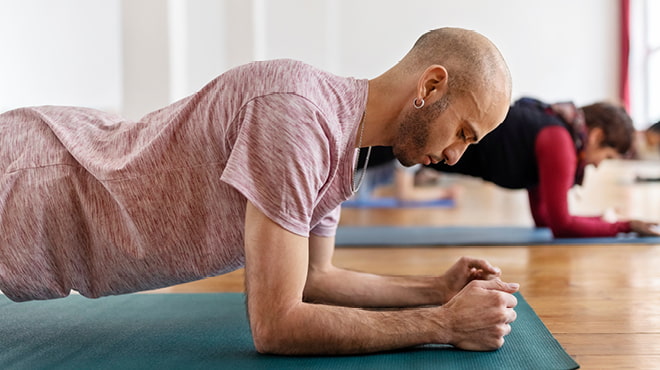By: Muhammad Ismail Khalid
For individuals aged 18-64, the World Health Organization recommends at least 150–300 minutes (about 5 hours) of moderate-intensity aerobic physical activity, or at least 75–150 minutes (about 2 and a half hours) of vigorous-intensity aerobic physical activity, complemented by muscle-strengthening activities of moderate or greater intensity that involve all major muscle groups on 2 or more days per week. These guidelines are well supported by evidence linking exercise to longevity and quality of life.
However, intense exercise should be customized to minimize the risk of injuries, which could lead to noncompliance with the routine. Theories suggest that humans have evolved from their ancestors to support maximal oxygen uptake (VO2max): a measure of the maximum amount of oxygen that can be utilized during intense exercise. From hunting and securing sufficient meat for physical development to adapting to oxygen toxicity, humans have thrived due to high endurance conditioning, leading to a higher VO2 max. Achieving a higher VO2max is the crux behind multiple celebrated exercise routines. While there is no quick fix to attain higher VO2max, in recent times, High Intensity Interval Training (HIIT) principles have surged in popularity at both national and international levels. Evidence suggests that HIIT, which emphasizes working harder rather than longer, has profound benefits for physical and mental wellness, including the release of monoamines such as serotonin and dopamine.
Studies have shown that HIIT can be an effective antidepressant. Gottschall et al. found that 4% to 9% of total training time spent above 90% of maximum heart rate is ideal for maximizing fitness and minimizing symptoms related to overreaching. This goal can be effectively achieved using parameters from smartwatches. While exercise induces monoamines in the brain, leading to robust health effects, the induction also depends on the exercise’s intensity. This might lead to a further push to achieve a monoamine high, neglecting the body’s capacity and risking injury.
Stimulus-based, high-intensity military-type boot-camps can be problematic for those who jump into such camps and are not accustomed to gradual conditioning. Sameer Tahir Malik, an internationally certified fitness expert leading Ironbox, cautions against such intense boot camps without prior endurance conditioning, noting a higher risk of injury and long-term non-adherence to exercise routines due to a lack of previous training, especially when unsupervised or lacks trained coaches. His advice is informed by observations of even seasoned athletes sustaining muscle tears in such rigorous programs.
Medically, strength and endurance conditioning microscopically injure our muscles; however, these injuries typically heal, resulting in strengthened muscles as a conclusion of
the natural process. Excessive or sudden bursts of physical activity can cause muscle fibers to break and release toxic proteins into the bloodstream—a condition known as rhabdomyolysis, which can be serious as it challenges the kidneys’ ability to filter these proteins and can disrupt the function of multiple organs.
This underscores why proper hydration during any workout is crucial. Hence along with pre and in-between water intake, post-exercise Rehydrating with 16-24 ounces (about 480-720 ml) of water for every pound of body weight lost during the workout is strongly recommended.
Although heart failure patients with preserved ejection fraction are encouraged to exercise, a European study led by Dr. Mueller found that neither high-intensity interval training nor moderate continuous training provided benefits over guideline-based physical activity.
However, a BMJ Open study suggests that healthy individuals in their 70s can safely engage in different workouts. However, for a healthy lifespan, moderate-intensity exercise appears equally beneficial.
Another reason to gradually increase your exercise routine is bone health. Patients with osteoporosis are generally advised to avoid high-impact exercise, especially those involving bending and twisting. The Mayo Clinic recommends weight-bearing aerobic activities such as walking, dancing, low-impact aerobics, elliptical training machines, stair climbing, and gardening. These exercises directly benefit the bones in the legs, hips, and lower spine by slowing bone loss and improving blood flow, which is also beneficial for the heart.
A consistent exercise routine can foster significant health benefits, but an intense, nonadherent routine may lead to psychophysical injuries that deter you from achieving desired results, and maybe a long-term absence from healthy physical activities.
The writer is a Neurologist and Headache specialist with a profound commitment to medicine and advocacy. His primary focus is producing literature that illuminates social injustices and advocacy for patients enduring headaches and mental health challenges, especially children. He can be reached at ismail4fanty@gmail.com

